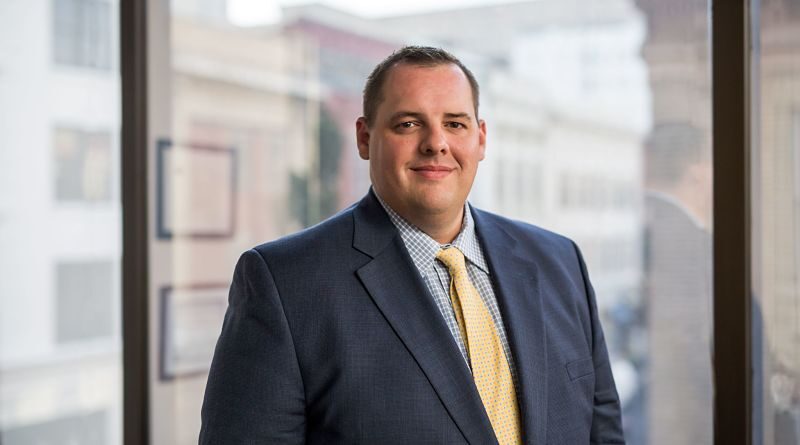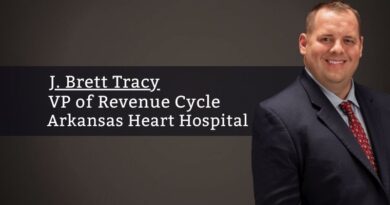COVID-19 and The Revenue Cycle: Life at Carilion Clinic and in Southwest Virginia
By J. Brett Tracy, Vice President of Revenue Cycle, Carilion Clinic
The pandemic and subsequent school closures thrusted revenue cycle departments into a frenzy this past March. Staff worried about their children and themselves as they grappled with the fear of the unknown. Revenue Cycle leaders and CFOs wondered how they would maintain productivity, margins, and engagements amidst a rapidly changing landscape. CIOs worried about how bandwidth would be impacted as employees worked from home and providers and patients fired up the telehealth ecosystem into overdrive.
Six months into this pandemic, we’ve had to balance the rungs of our own personal Maslow Hierarchy ladder, ensuring the safety and protection of our families and employees while also leading the charge to serve patients, schedule services, complete registrations and discharges, and ensure accurate coding and billing to facilitate clean claims. All the while, we’ve continued to prioritize compassionate service as our patients work through finance plans and payment arrangements to pay their bills while balancing financial hardships.
At Carilion Clinic, our revenue cycle team continues adapting to the evolving situation. Here are some key lessons learned from our response.
Hospital finance contingency planning rarely, if ever, included the “What-If” scenarios of not having elective procedures in the “Plan B” financial forecasts. However, this crisis quickly shifted, raising the importance of forecasting and analytics. Revenue cycle departments are no different. At Carilion, we leveraged our existing Revenue Cycle Process Improvement (RCPI) team to create special dashboards, analyzing charging metrics, goals, staffing, and productivity. Through these dashboards, we were able to quickly trend, project, and forecast month-end goals based on staffing fluctuations, quarantine, productivity shifts, and provider charging behavior. We also experienced furloughs and reduced hours in our department and accounted for the decreased availability in our models.
We knew that the pandemic would drive down margins and increase deficits by the sheer nature of not being able to provide elective procedures. It doesn’t take a CPA license or an MBA to see this. What we didn’t know was, as employee hours and furloughs shifted, how would cash flow be impacted? What many CFOs quickly learned was that the rapid A/R fluctuations would send ADR (average daily revenue) metrics into a topsy-turvy tailspin and dramatically change A/R metrics. What became imperative was showing different “weighted” models that project like comparisons based on historical and current ADR totals.
To get back on track, we modeled how each process, employee type, and activity positively impacts cash flow and other relevant metrics. Based on payer policy changes and temporary delays, we knew that prioritizing revenue cycle steps in the normal course of action (Front > Middle > Back) was also the right way to approach resuming operations as we moved to the “new normal.” Ongoing patient access staffing (Front) was a non-negotiable. These warriors live through constant stress and changes, and COVID-19 caused us to strengthen our bench employees and adhere to a “next person up” model as we battled through daily challenges. Since payer policies and processes were temporarily delayed, we knew we had to bring our coders (Middle) back next to code claims and process charges. Then, when the payers started back up, the claims would be waiting to be processed.
Here is where the analytics and hard conversations come into the mix. In the Back portions of the revenue cycle, how do you determine who returns first? The challenge is balancing the fact that all employees are important and equal; however, payer reimbursement and readiness vary. We aligned billing/customer services teams and onboarding to be congruent with payer processes in order to maximize reimbursement. The CARES Act and Medicare Accelerated and Advanced Payment Program helped ensure hospital sustainability. At Carilion, we were also blessed with an internal partnership amongst Revenue Cycle, Technical Services Group (IT), and Epic to optimize and automate our payment posting workflows. This optimization, coupled with our RCPI team’s new dashboards, positioned us to quickly analyze and communicate changes and progress with our finance and provider stakeholders.
At Carilion, we leveraged our existing Revenue Cycle Process Improvement (RCPI) team to create special dashboards, analyzing charging metrics, goals, staffing, and productivity.
Financial sustainability requires daily analytical modeling and forecasting. Today, we are fortunate to provide elective services again for our patients. With this change comes enhanced COVID-19 testing protocols, increased monitoring for charging and reimbursement fluctuations, and ongoing monitoring for revenue cycle staff productivity and quality. The opportunity to ensure constant staff engagement is critical as we move to virtual meetings and work to identify new ways to communicate and combat the isolation that employees experience. Provider communication, while always important, rises to a new level of ongoing communication and clarity to ensure daily goal monitoring and forecasting. Ensuring daily collaboration with the IT department also becomes more critical as we align our highest priorities.
I am reminded of my days as a college football player when we had multiple practices each day in near triple-digit temperatures. There would always be players who didn’t possess the mental or physical fortitude to endure the unbearable heat, grueling practices, and games. The coach would remind us that it is “Mind over matter. I don’t mind, and it doesn’t really matter [what you think].” His point was perseverance and resilience are the keys to triumphing over tough times and lasting through it all. While the grueling football practices are trivial in comparison to the current pandemic, the quote still resonates as I remember that it is about working together as a team and having the strength and courage to bring your best to work each day, regardless of location, and cherish your work “family” to make it through. At Carilion, we have been blessed with a great team of committed individuals in and around the Revenue Cycle department.



